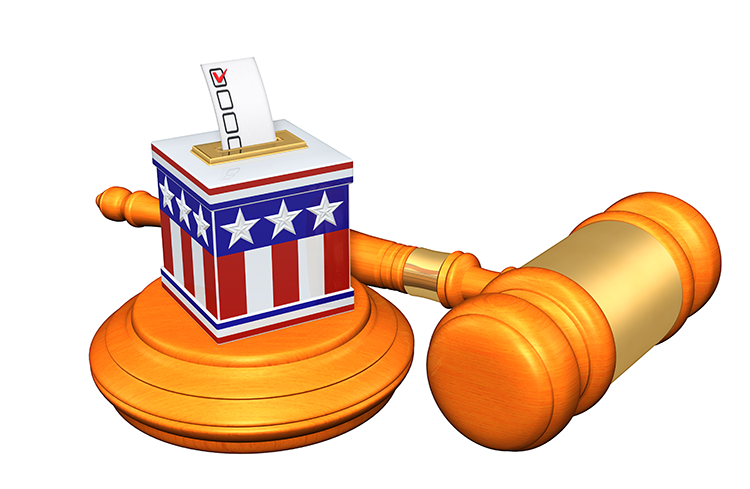The 2020 election: 4 threats to anticipate

Image from Shutterstock.com.
Suzanne Spaulding wasn’t surprised when a report released by the Office of the Director of National Intelligence in January 2017 found that Russia’s efforts to interfere in the previous year’s presidential election were part of a larger plan to undermine democracy in the United States.
“It had been going on long before the election and would continue,” says Spaulding, the former undersecretary for the National Protection and Programs Directorate at the Department of Homeland Security, who worked with federal authorities and state and local officials to secure election infrastructure in 2016.
“People kept saying the Russians will be back, but, in fact, the Russians never left. They are engaged in this broader campaign to weaken our democracy in a variety of ways.”
Spaulding, now senior adviser for homeland security at the Center for Strategic and International Studies in Washington, D.C., and a liaison to the ABA Cybersecurity Legal Task Force, expects that campaign to continue ahead of and during the 2020 presidential election. She joined several experts in sharing with the ABA Journal some potential threats from malicious foreign actors and how to counter them.
1. Entire election process could be targeted. Since it’s possible that someone could hack into the election system to change votes that then change the election outcome, Spaulding says federal authorities and local and state officials should work to secure each step of the process, including voter registration, ballot counting and election results reporting. As a board member of Defending Digital Campaigns, she is also helping to identify cybersecurity providers who can provide services to political parties and campaigns for free or at a discount. “We recognize that campaigns, particularly congressional campaigns, are usually shoestring operations,” she says. “They are often run out of someone’s kitchen or living room, and we know they can be targets.”
2. Disinformation about candidates or election will be circulated. Adav Noti, senior director, trial litigation and chief of staff at the Campaign Legal Center in Washington, D.C., and Spaulding agree that a more significant threat is disinformation spread by malicious actors to manipulate the public’s confidence in the election system. This could include false information about polling places changing to different locations to suppress turnout or false claims that results were altered to cause disruption after the election. “One of the big lessons of 2016 is that there are very sophisticated actors, both within the United States and abroad, who are willing and able to exploit the wild west atmosphere online to advance their agenda,” says Noti, formerly with the Federal Election Commission. He encourages voters to remain skeptical of information they find online, while Spaulding contends that consistent use of paper ballots and post-election audits could help legitimize outcomes.
3. Social media could amplify false messaging. Disinformation isn’t new, but the use of social media to quickly and widely spread it is unprecedented, says Jennifer Daskal, a professor and faculty director of the Tech, Law & Security Program at American University Washington College of Law in Washington, D.C. She contends that other features of social media, including the “possibility of ad micro targeting, the extreme popularity of and easy ability to spread outrageous messages that increase views and closed circles of people who communicate in self-referential ways,” facilitate the spread of disinformation. To prevent malicious foreign actors and others from exploiting these vulnerabilities, Daskal suggests companies and governments identify and take down inauthentic and fraudulent accounts, mandate transparency as to the source and targeting practices associated with ads and share threat information, including election interference efforts. “Members of the public also have a role to play—taking steps to evaluate information critically and educate themselves about their information sources,” she adds.
4. The effects of disinformation could be felt long after the election. The “liar’s dividend”—the theory that constantly filtering through false messages and manipulated media results in the public not trusting any information—may be a long-term consequence of election interference, says Matthew F. Ferraro, a former intelligence officer and now senior associate in WilmerHale’s Washington, D.C., office. “Disinformation and deep fakes—and even the discussion of these things—give people permission to disbelieve real things to the benefit of the liar,” he says. “That has a way of exacerbating previously held beliefs and chipping away at fundamental shared values of truth and objectivity.” Spaulding adds that it causes the public to tune out and not participate in voting or holding institutions accountable. For that, she says, the remedy is civic education. “It focuses on reminding Americans about how important democracy is and why it’s worth fighting for,” Spaulding says.



